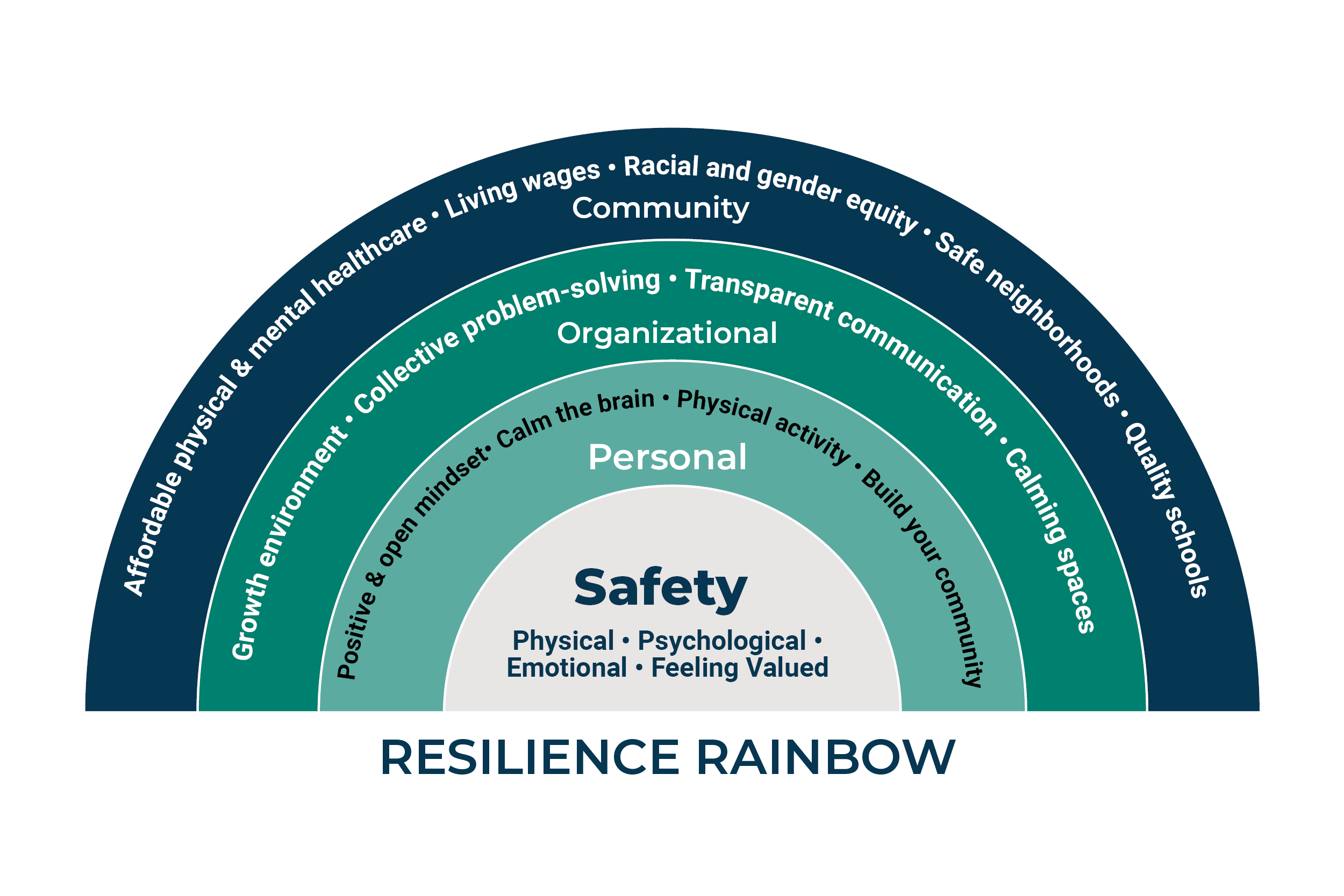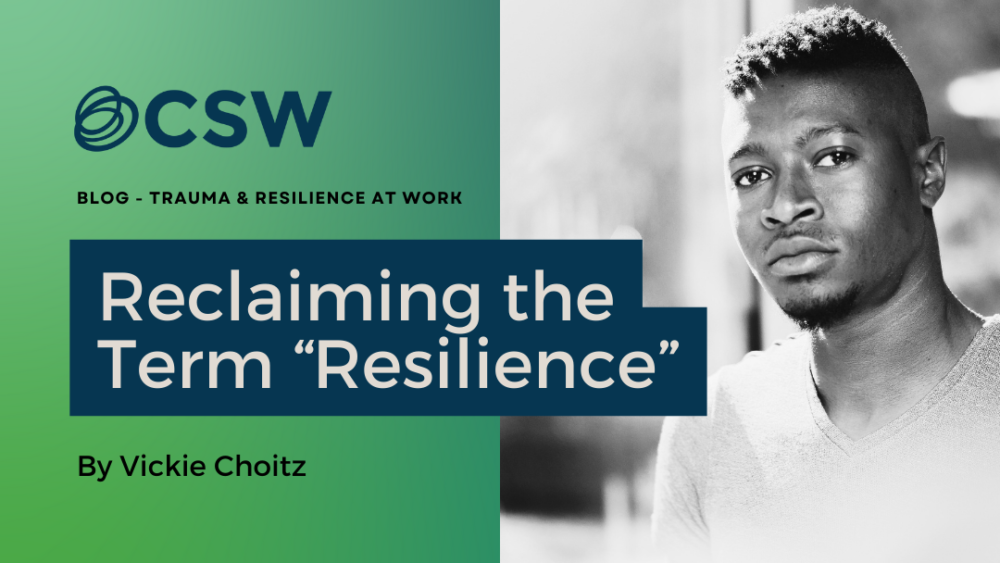In discussions on trauma and mental health, the term “resilience” receives mixed reception. In its dictionary definition, resilience refers to a person’s ability to adjust or recover from adversity or trauma. However, some communities have experienced the term as an admonishment to toughen up and move on from an adverse experience. It puts the onus on the individual, while ignoring the systemic pervasiveness of racism, misogyny, and other forms of oppression. In this dismissive usage, “resilience” becomes yet another burden to bear and tool of oppression, failing to acknowledge the harm individuals and communities have experienced. This minimizes both the impact of trauma and the support required to heal.
However, what would it mean to reclaim the use of the term resilience? What if, instead, resilience referred to overcoming adversity and emerging stronger for the challenges ahead of us, an even more powerful sentiment than the dictionary definition? Acknowledging, honoring, metabolizing, and healing from trauma—whether it be Adverse Childhood Experiences, racial, historic, poverty, or other trauma—is an essential part of building resilience as individuals, organizations, and communities. Survivors of adversity aren’t getting over anything; we are fueling our power to not only survive, but to thrive and help others thrive as well. As Dr. Denese Shervington puts it in her book title: Healing is the Revolution. This is what we mean when CSW uses the term resilience.
When the Trauma and Resilience at Work team was launched in May 2022, those involved debated over the team’s name due to the mixed reception of the term resilience. We wondered if we should just use the term “trauma-informed” or possibly “trauma-responsive,” or if we should embrace an even newer term in the field, “healing-centered.” Kysha Wright Frazier, CSW’s President and CEO, made a good point in this discussion: “From my experience coming from a community and being a person of color, resilience is also power and pride!”
Ultimately, we decided to use our name and our work as an opportunity to reclaim the term resilience—as healing, power, and pride. We also made the decision to include the term “trauma,” because understanding how trauma works and affects us is an essential component of healing and building resilience. Another important aspect of reclaiming and defining “resilience” is that we always—always—talk about building resilience as more than a personal set of self-care activities. To this end, we crafted our Resilience Rainbow.

The CSW Resilience Rainbow illustrates three levels of resilience-building: individual, organizational, and community-based. In all three spheres, each of us has opportunities and obligations in helping each other to build resilience. The pot of gold at the center of this rainbow is safety. Physical, psychological, emotional safety and feeling valued are the foundation for our resiliency.
We can build resilience on the personal level through self-care plans that help us regulate our physical and mental responses to stress and trauma, maintain mental health, and protect our bodies and minds from the damage caused by stress and trauma. Our team uses a comprehensive self-care tool by Olga Phoenix to help participants understand the multi-dimensionality of self-care. It includes practices most people are familiar with, such as exercising and eating healthily, as well as taking all vacation days at work. But it also includes self-care that might surprise people, such as practicing forgiveness (for yourself and others), spending time with others, and praying. Self-care practices are not at all selfish or a luxury; but a key tool in building resilience.
Organizations can adopt practices and policies that cultivate trauma-informed and resilience-building cultures. For this, we turn to the simple yet powerful framework, SAMHSA’s Six Key Principles for a Trauma-Informed Approach.

Adopting these principles in organizational workplaces builds trust, respect, and interconnection between team members. These workplace characteristics weave a strong and adaptable culture of interpersonal support and teamwork that helps an organization survive internal and external challenges.
Building resilience at the community level happens by ensuring policies, systems, and structures support individuals and families to achieve their full potential. This means ensuring safe neighborhoods, affordable housing, access to education and training, living wages, quality jobs, accessible physical and mental healthcare, and more. When communities are low on these resiliency factors, it undermines any personal resilience individuals may try to build, which is why all three levels need to be fortified simultaneously.
Resilience may remain a contentious term; the next time you hear or use it, please consider how it is being used. It is vital we reject shallow, individualistic invocations and, instead, reclaim resilience as a means to heal from trauma, overcome oppression, and grow thriving organizations and communities.

Meet the Author
VIckie Choitz
Vickie Choitz is the Director of Trauma and Resilience at Work. The CSW Trauma and Resilience at Work team advances workplaces and workforces that are culturally responsive, trauma-informed, healing-centered, resilience-building, and supportive of mental well-being. Continue Reading >>



Comments are closed.